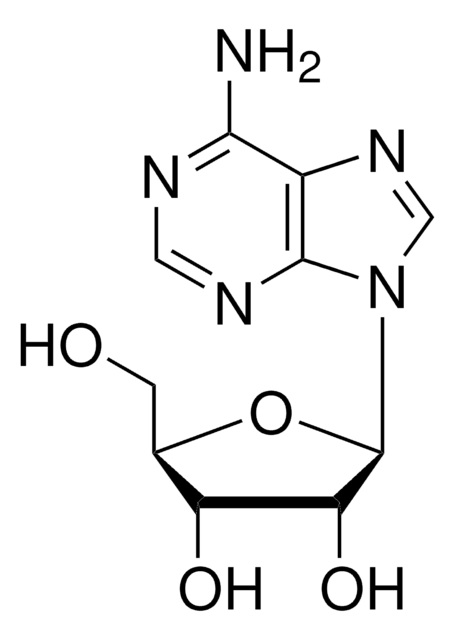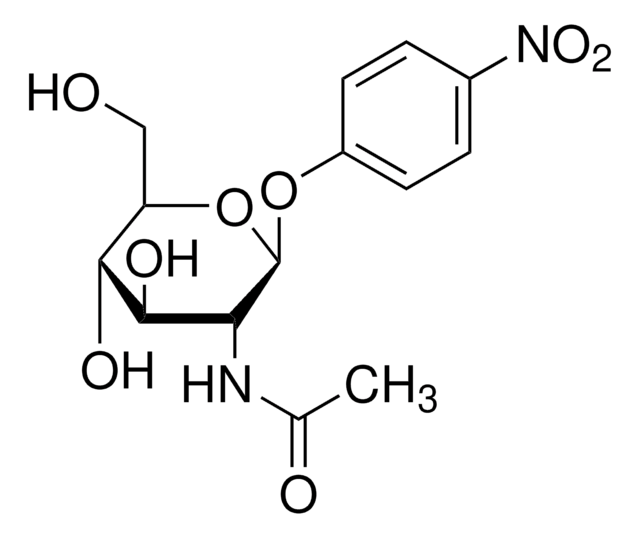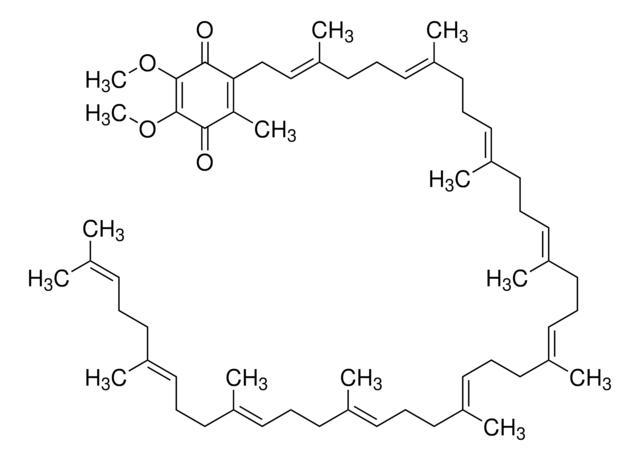Wichtige Dokumente
P207
Philanthotoxin 433 tris(trifluoroacetate) salt
≥98% (HPLC), powder
Synonym(e):
(S)-N-[4-[[3-[(3-Aminopropyl)amino]propyl]amino]butyl]-4-hydroxy-α-[(1-oxobutyl)amino]benzenepropanamide tris(trifluoroacetate) salt, PhTX-433 tris(trifluoroacetate) salt
About This Item
Empfohlene Produkte
Assay
≥98% (HPLC)
Form
powder
Lagerbedingungen
desiccated
Farbe
white to beige
Löslichkeit
H2O: ≥10 mg/mL
Lagertemp.
−20°C
SMILES String
OC(=O)C(F)(F)F.OC(=O)C(F)(F)F.OC(=O)C(F)(F)F.CCCC(=O)N[C@@H](Cc1ccc(O)cc1)C(=O)NCCCCNCCCNCCCN
InChI
1S/C23H41N5O3.3C2HF3O2/c1-2-7-22(30)28-21(18-19-8-10-20(29)11-9-19)23(31)27-17-4-3-13-25-15-6-16-26-14-5-12-24;3*3-2(4,5)1(6)7/h8-11,21,25-26,29H,2-7,12-18,24H2,1H3,(H,27,31)(H,28,30);3*(H,6,7)/t21-;;;/m0.../s1
InChIKey
UROZAUWUTBOQNV-YDULTXHLSA-N
Angaben zum Gen
human ... GRIN1(2902)
mouse ... GRIN1(14810)
rat ... GRIN1(24408)
Biochem./physiol. Wirkung
Vorsicht
Rekonstituierung
Rechtliche Hinweise
Signalwort
Danger
H-Sätze
P-Sätze
Gefahreneinstufungen
Acute Tox. 3 Oral
Lagerklassenschlüssel
6.1A - Combustible acute toxic Cat. 1 and 2 / very toxic hazardous materials
WGK
WGK 3
Flammpunkt (°F)
Not applicable
Flammpunkt (°C)
Not applicable
Persönliche Schutzausrüstung
Eyeshields, Gloves, type N95 (US)
Hier finden Sie alle aktuellen Versionen:
Besitzen Sie dieses Produkt bereits?
In der Dokumentenbibliothek finden Sie die Dokumentation zu den Produkten, die Sie kürzlich erworben haben.
Unser Team von Wissenschaftlern verfügt über Erfahrung in allen Forschungsbereichen einschließlich Life Science, Materialwissenschaften, chemischer Synthese, Chromatographie, Analytik und vielen mehr..
Setzen Sie sich mit dem technischen Dienst in Verbindung.







